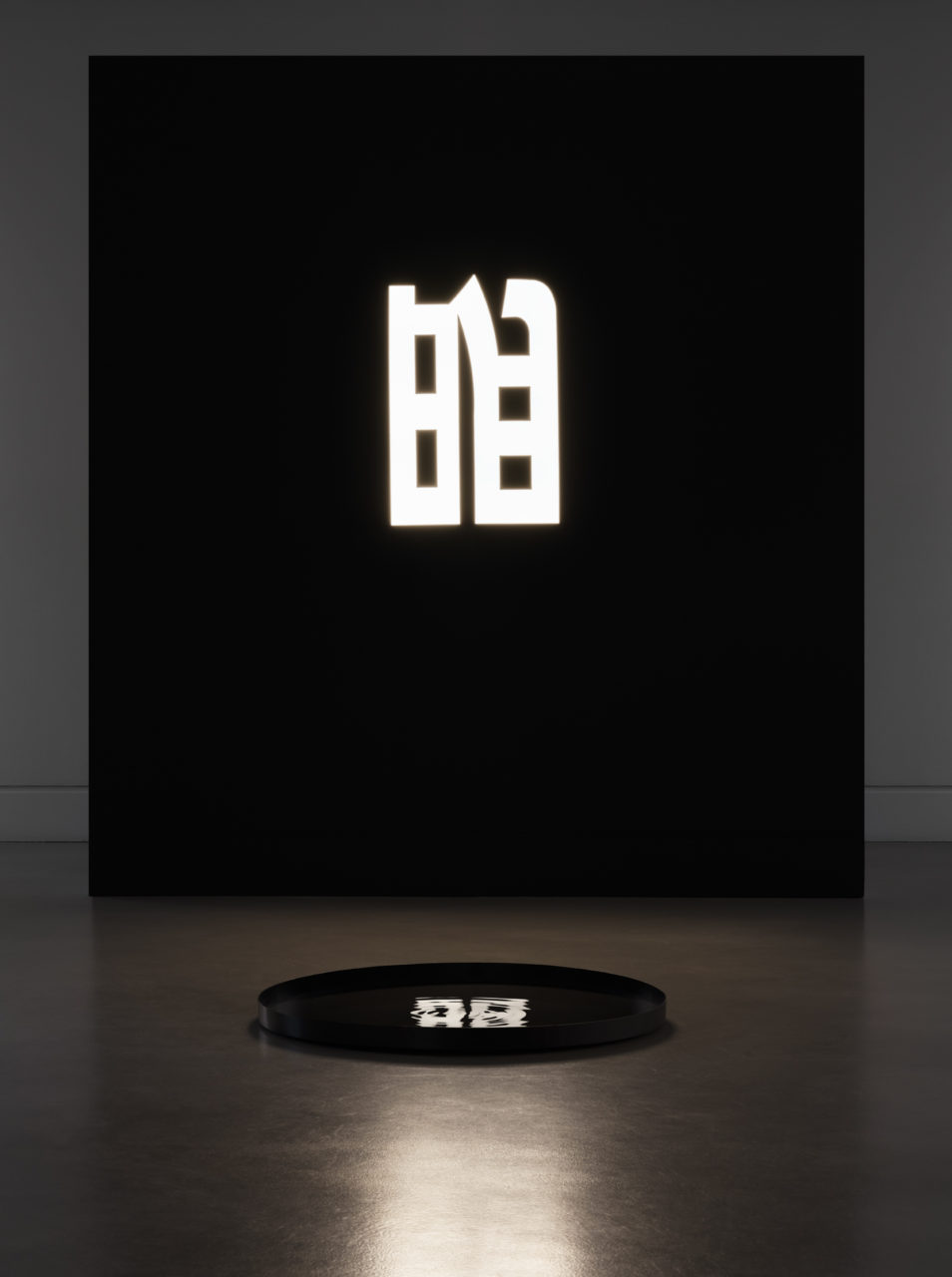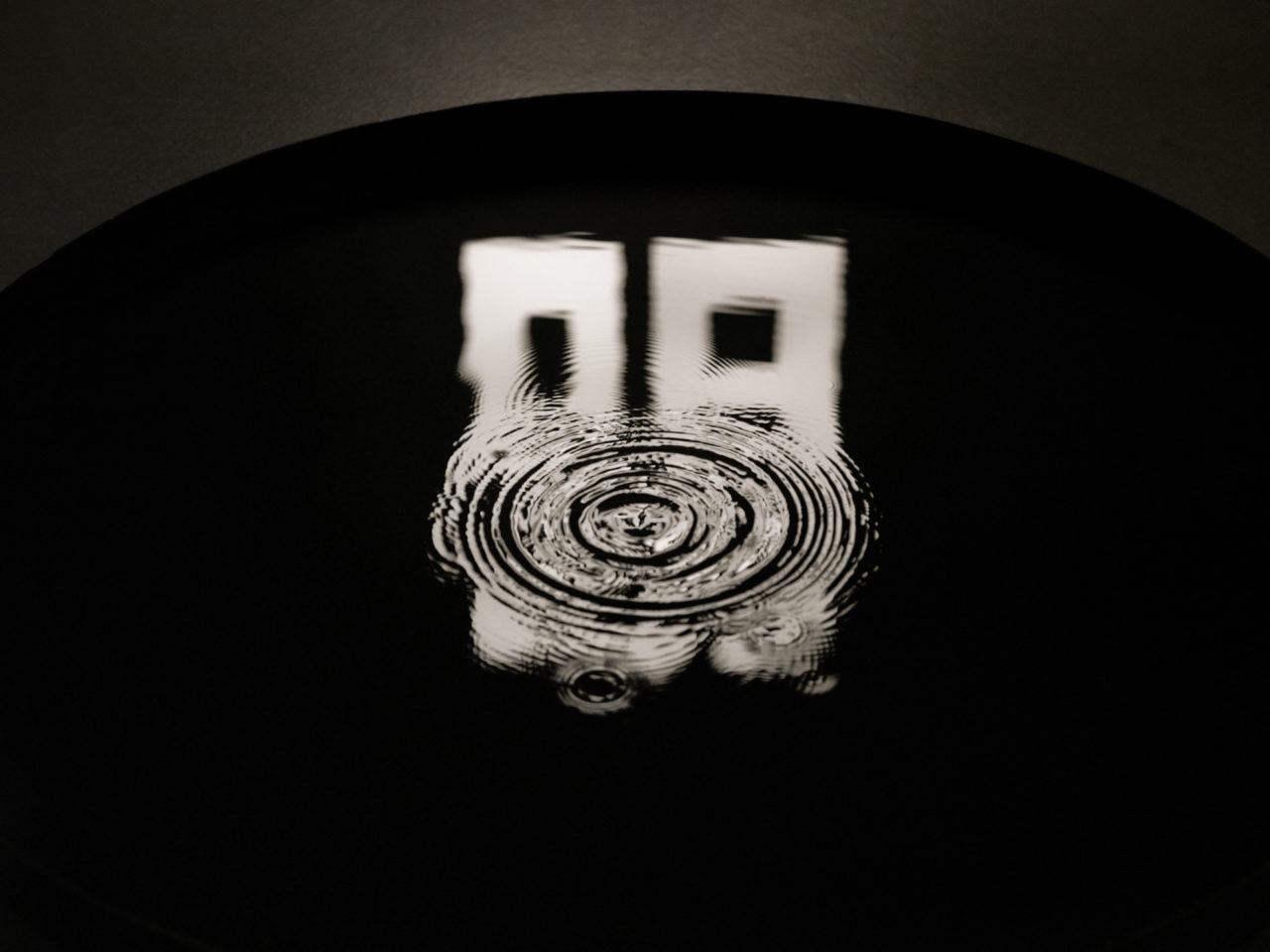light object H 80 cm x W 53 cm x D 8 cm (stainless steel, acrylic, LED light) steel cylinder diameter 100cm, water drip system 2015
The sun is 400 times bigger than the Moon, but since the distance from the Earth to the Sun is coincidentally 400 times greater than the distance between the Moon and the Earth, the factors match and both bodies appear to be a similar size. Humans have always applied symbolic, and also contrasting, meanings to these two bright spheres in the sky: fire and water, male and female, yin and yang, stasis and change etc... SunMoonMoonSun brings the two opposing concepts together to form a resulting Chinese ideographic meaning: “bright”. Day and night are opposites, but together they are unified as a single day.
SunMoonMoonSun draws on these natural ambiguities through reflection. The relationship between real and illusion, original and reproduction, ideology and situation are not just contrasting but reversible, and therefore complementing. For everything to exist, there needs to be just the right distance between two opposites; we need to hold our ground here in the middle of these celestial spheres, between the sky and its reflections.


Installation view of Gwenessa Lam and Hyung-Min Yoon: Trace, exhibition at the Art Gallery at Evergreen, 2020. Photo: Rachel Topham Photography
태양은 달의 크기보다 400배가 크지만, 지구에서 태양까지의 거리가 지구에서 달까지의 거리보다 또 마침 400배가 멀어 둘의 크기는 거의 같아 보인다. 인간은 하늘에 빛나는 이 두 개의 구체를 두고 물과 불, 남성과 여성, 음과 양, 불변성과 가변성 등 반대의 의미를 지닌 다양한 상징들을 부여해왔다. 서로 대비되는 태양과 달이 합쳐진 한자 明은 새로이 밝다는 의미를 갖는다. 또 낮과 밤은 반대인 동시에 함께 하루라는 시간을 구성한다.
이렇게 확장되는 반대의 개념은 이 작품에서 물 위의 반영으로 이어진다. 즉, 실체와 허상, 원본과 복제품, 이념과 상황은 모두 단순히 상반되는 개념이 아니라, 서로 뒤바뀔 수 있으며 긴밀히 연결되는 보완의 관계다. 그리고 이러한 두 개념들의 사이에는 적절한 거리를 필요로 한다. 하늘의 태양과 달, 그리고 그 반영들 사이에 우리가 서있는 땅이 존재하는 것처럼.
(작가노트 중)
